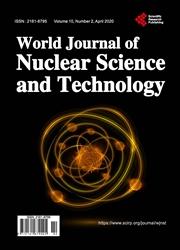Method to Measure Indoor Radon Concentration in an Open Volume with Geiger-Mueller Counters: Analysis from First Principles
引用次数: 5
Abstract
A simple method employing a pair of pancake-style Geiger-Mueller (GM) counters for quantitative measurement of radon activity concentration (activity per unit volume) is described and demonstrated. The use of two GM counters, together with the basic theory derived in this paper, permit the detection of alpha particles from decay of and progeny ( 218Po, 214Po) and the conversion of the alpha count rate into a radon concentration. A unique feature of this method, in comparison with standard methodologies to measure radon concentration, is the absence of a fixed control volume. Advantages afforded by the reported GM method include: 1) it provides a direct in-situ value of radon level, thereby eliminating the need to send samples to an external testing laboratory; 2) it can be applied to monitoring radon levels exhibiting wide short-term variability; 3) it can yield short-term measurements of comparable accuracy and equivalent or higher precision than a commercial radon monitor sampling by passive diffusion; 4) it yields long-term measurements statistically equivalent to commercial radon monitors; 5) it uses the most commonly employed, overall least expensive, and most easily operated type of nuclear instrumentation. As such, the method is par-ticularly suitable for use by researchers, public health personnel, and home dwellers who prefer to monitor indoor radon levels themselves. The results of a consecutive 30-day sequence of 24 hour mean radon measurements by the proposed GM method and a commercial state-of-the-art radon monitor certified for radon testing are compared.盖革-穆勒计数器测量室内开放体积氡浓度的方法:从第一性原理分析
本文描述并演示了一种采用一对煎饼式盖格-穆勒(GM)计数器定量测量氡活度浓度(单位体积活度)的简单方法。使用两个GM计数器,结合本文导出的基本理论,可以从衰变和子代(218Po, 214Po)中检测α粒子,并将α计数率转换为氡浓度。与测量氡浓度的标准方法相比,该方法的一个独特之处在于没有固定的对照体积。所报告的转基因方法的优点包括:1)它提供了氡水平的直接原位值,从而无需将样品送到外部测试实验室;2)可用于监测短期变异性较大的氡水平;3)与商业氡监测仪被动扩散采样相比,它可以产生与之相当的精度和相当或更高的精度的短期测量;4)产生的长期测量数据在统计上相当于商用氡监测仪;5)它使用最常用、总体上最便宜、最容易操作的核仪器。因此,该方法特别适合研究人员、公共卫生人员和喜欢自己监测室内氡水平的家庭居民使用。采用拟议的GM方法和经认证的商业最先进的氡监测仪对连续30天的24小时平均氡测量结果进行了比较。
本文章由计算机程序翻译,如有差异,请以英文原文为准。
求助全文
约1分钟内获得全文
求助全文

 求助内容:
求助内容: 应助结果提醒方式:
应助结果提醒方式:


